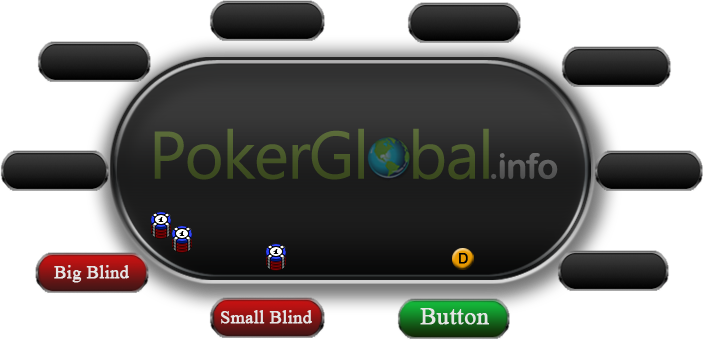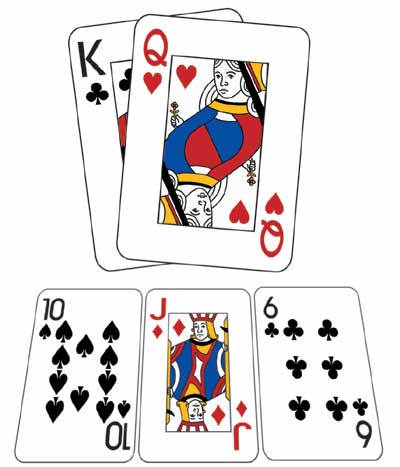Texas Holdem Blind Size
In Holdem, when you have a very short stack of 10bb or less, your preflop strategy is basically limited to shoving or calling a shove. An optimal strategy will depend on your opponent’s flaws, as exploiting their flaws will be the most profitable approach.
However, it is essential to comprehend what a balanced preflop gto strategy is so that you can spot their leaks and avoid making errors yourself. The Texas Holdem poker hands charts that we will present below will help you master preflop gto strategy when playing with a short stack.
- Texas Holdem Blinds App
- Texas Holdem Blind Structure
- Texas Holdem Blind Schedule
- Texas Holdem Blind Timer
- Texas Holdem Blind Sizes
- Texas Holdem Blind Schedule
Jul 18, 2018 The size of the blinds are determined by the table stakes. There’s a small blind and a big blind. The big blind is normally the size of the small bet, while the small blind is usually half that. For example, if you’re playing in a $4/$8 Texas holdem game, the bets during the first 2 rounds are made in $4 increments. Dec 19, 2006 You're in seat five of a nine-handed $4-$8 limit hold 'em cash game and the dealer button reaches seat three. That means you are in the big blind position and must put $4 in front of you before the.
This is known as the small blind. The player to his left will then place a full bet for that round. This player is called the big blind. Once the cards are dealt, the betting action starts with the player to the left of the big blind. He may either fold, call (by matching the big blind's initial bet) or raise (by increasing the big blind's bet). Texas Hold’em is a game of strategy, like any poker game, but where you’re sitting in relation to the action becomes part of your strategy when playing Hold’em. If you bet early, you generally need better cards than you do if you’re one of the blinds. The following table offers sound advice on what hands are playable when you’re. Poker Buttons and Blinds. If a player chooses to post the total amount of the blinds, an amount up to the size of the minimum opening bet is live. How to Play Poker Poker Rules Poker Hand.
Gto based Preflop Shove Strategy – Early Position
From an early position, even with a short stack, you must play your strongest hands. This means playing mostly premium starting hands and suited Broadway cards.
Below is a Texas Holdem gto based chart for shoving under the gun in a 9 handed-table with a 10bb, 8bb, and 6bbstack.
Gto based Preflop Shove Strategy – Middle Position
From a middle position, you still play strong hands. Now you can add some more suited starting hands, notably suited aces, some more additional unsuited Broadway cards, like KJo and small pairs.
Below is a Texas Holdem gto based chart for shoving from middle position 2 in a 9 handed-table with a 10bb, 8bb, and 6bbstack.
Gto based Preflop Shove Strategy – Late Position
From late position, as the players left to act are reduced, your push range starts to become much wider.

Below is a Texas Holdem gto based chart for shoving from the cutoff with a 10bb, 8bb, and 6bbstack.
From the button, your range can be even looser. Below is a Texas Holdem gto based chart for shoving from the cutoff with a 10bb, 8bb, and 6bbstack.
Gto based Preflop Shove Strategy – Small Blind
From the small blind, you can become super aggressive. Now you only have to worry about the big blind having a strong hand!
Below is a Texas Holdem gto based chart for shoving from the small blind with a 10bb, 8bb, and 6bbstack.
Gto based Calling a Shove Strategy – Early Position
When you are facing a shove, as the gap concept suggests you need a stronger hand than what you would shove with in the same position if you were first in.
Texas Holdem Blinds App
Below is a Texas Holdem gto based chart for calling from utg +1 an utg shove with a 10bb, 8bb, and 6bbstack.
Gto based Calling a Shove Strategy – Middle Position
Texas Holdem Blind Structure
Below is a Texas Holdem gto based chart for calling from middle position a shove from middle position with a 10bb, 8bb, and 6bbstack.
Gto based Calling a Shove Strategy – Late Position
Below is a Texas Holdem gto based chart for calling from the button a shove from middle position with a 10bb, 8bb, and 6bbstack.
Below is a Texas Holdem gto based chart for calling from the button a shove from the cutoff with a 10bb, 8bb, and 6bbstack.
Gto based Calling a Shove Strategy – The Blinds
Below is a Texas Holdem gto based chart for calling from the small blind a shove from under the gun with a 10bb, 8bb, and 6bbstack.
Below is a Texas Holdem gto based chart for calling from the small blind a shove from middle position with a 10bb, 8bb, and 6bbstack.
Below is a Texas Holdem gto based chart for calling from the big blind a shove from the cutoff with a 10bb, 8bb, and 6bbstack.
Below is a Texas Holdem gto based chart for calling from the big blind a shove from the button with a 10bb, 8bb, and 6bbstack.
Below is a Texas Holdem gto based chart for calling from the big blind a shove from the small blind with a 10bb, 8bb, and 6bbstack.
The SB is unfortunately one of the least profitable places to be at the table. We are forced to give up a mandatory 0.5bb without even seeing our hole cards, and are guaranteed to always be out-of-position postflop!
BB vs SB
- Big-Blind – Flat wide and 3bet aggressively.
- Small-Blind – Flat Tight and 3bet aggressively.
- 1) We have invested less money in the SB and don’t get as good of a price to call.
- 2) We do not close the action in the SB. The BB may squeeze or overcall.
Raise First In

Defending vs Opens
SB vs BTN 2.5x
- Light-Red – 3bet for value
- Dark-Red – 3bet bluff
- Dark-Blue – cold-call
- Green – Mixed Strategy (Sometimes call, sometimes 3bet)
SB vs CO 3x
SB vs MP 3x
SB vs UTG 3x
Iso-Raising/Completing
- Red – Iso-raise for value
- Blue – Complete
- White - Fold
HU Completes
- Light red – Limp/Raise for Value
- Dark Red – Limp/Raise as a bluff
- Dark Blue – Limp/Call
- Light Blue – Limp/Fold
- White – Open Fold

- Green – Open Raise
- Light Blue – Limp/Fold

Squeezing and Overcalling
- Light Red – Value Squeeze
- Green – Mixed strategy – Both Overcalling and Squeezing are fine
- Dark Blue – Overcall
- Dark Red – Bluff squeeze
- Position of the opener
- Position of the caller
- Tendencies of the raiser and caller
- The size of the open-raise
- Tendency of the BB
Texas Holdem Blind Schedule
However, assuming the BB is passive we can expand our overcalling range and follow a very similar strategy to the one that we would typically use in the BB when facing multiple opponents.Putting it Together
Texas Holdem Blind Timer
- Aggressively steal against opponents who don’t defend their big-blind
- Flat a very tight and sparing range in general
- 3bet aggressively vs LP opens but very tight vs EP opens
- Consider employing a completing strategy when relevant
- Understand when to overcall/squeeze
Other Top Recommended Content
Texas Holdem Blind Sizes
If you enjoyed reading this article, check out our other top recommended articles by Adam Jones!- How to Get in the Zone and Play Your Best Poker
- Live Poker Tells and How to Mask Them
- Micro Stakes - Floating & Exploiting
- Bitesize Training: EV Calculations